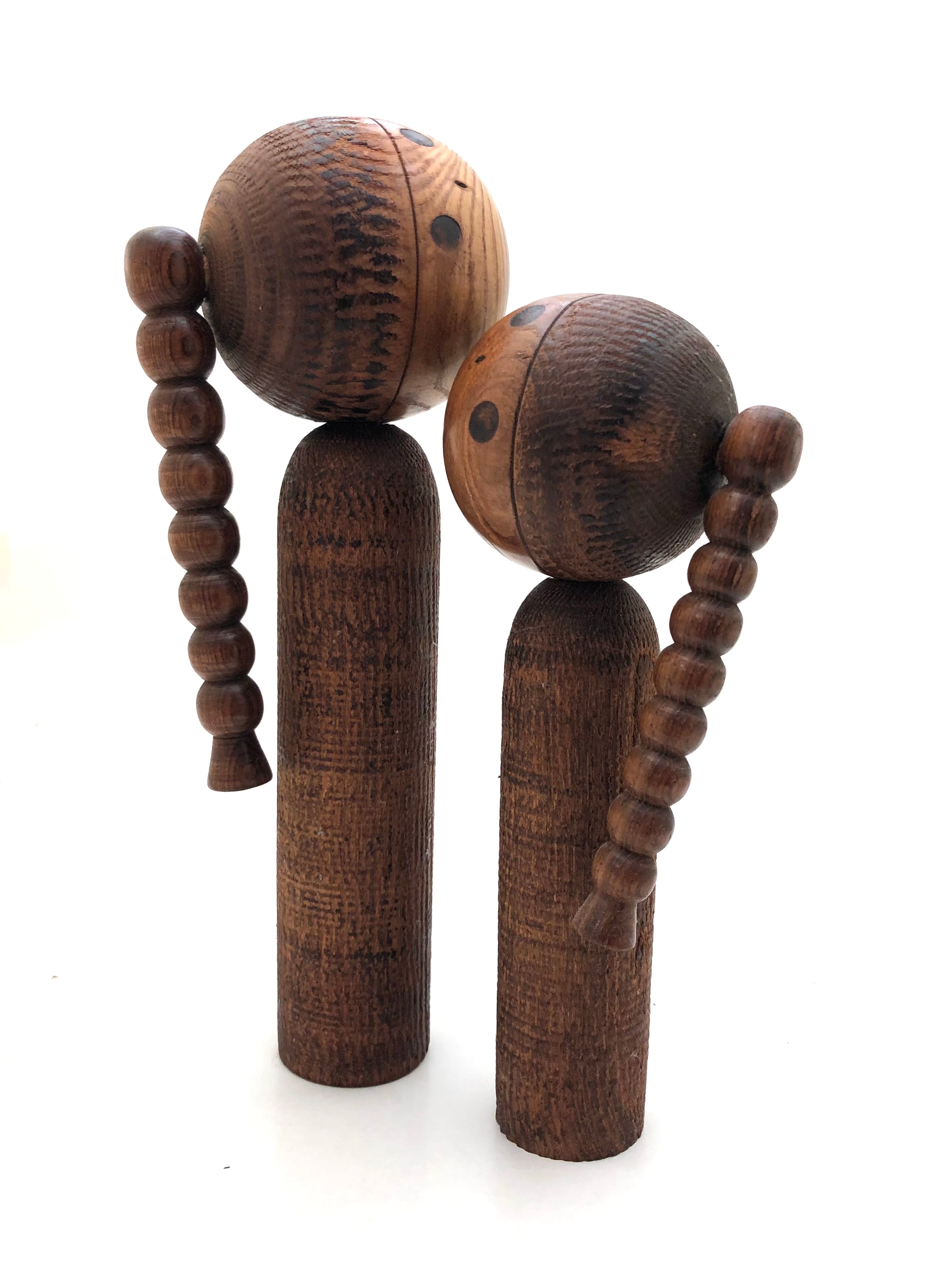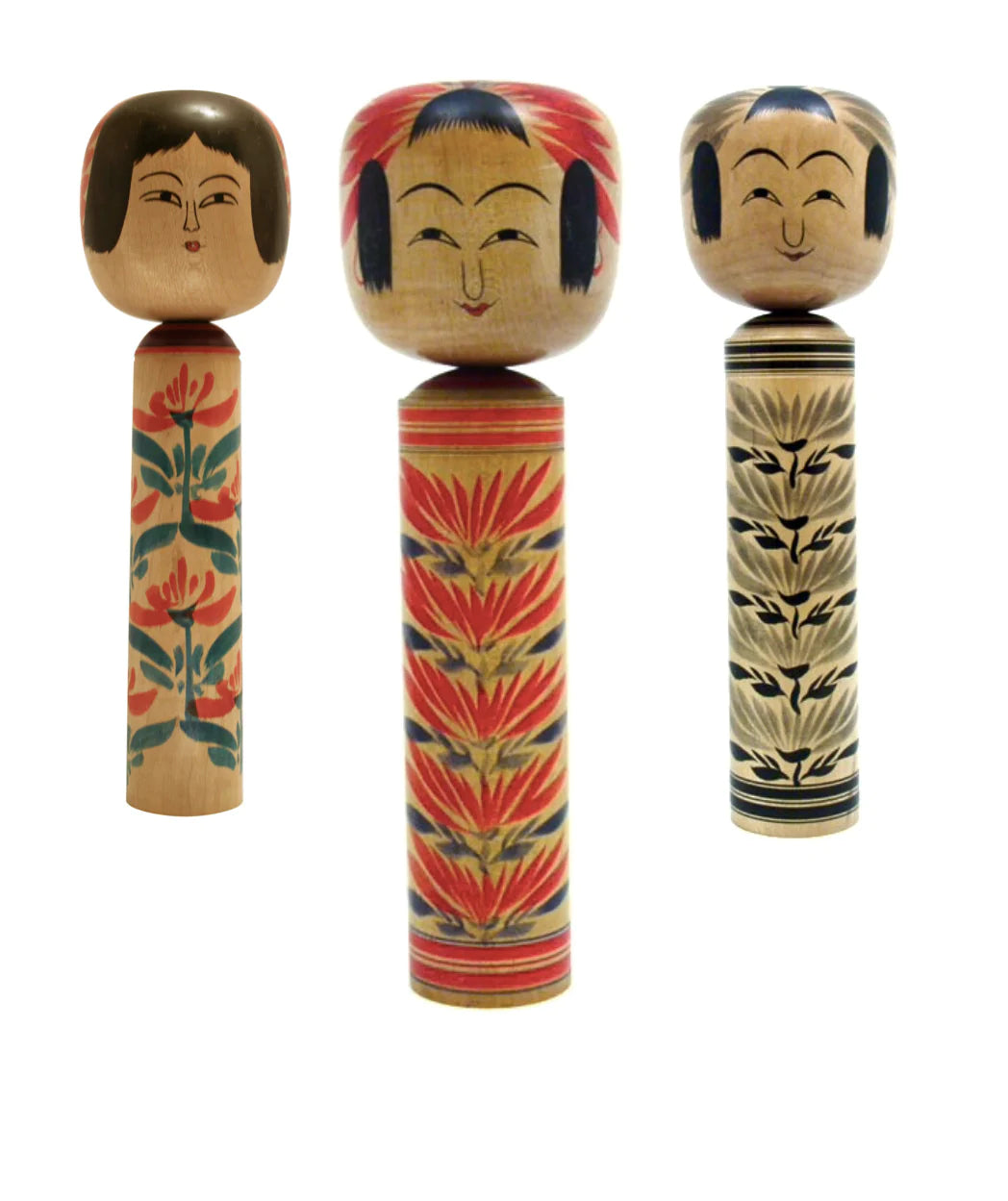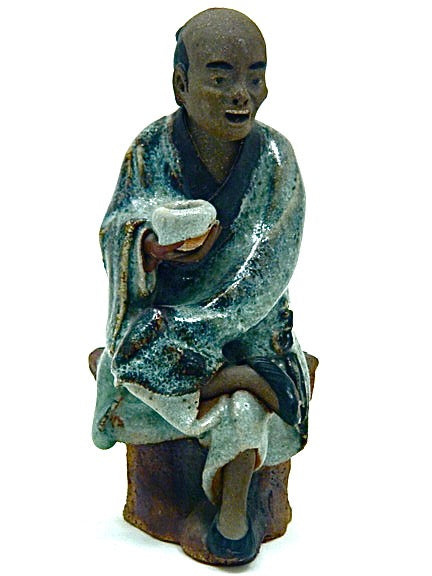

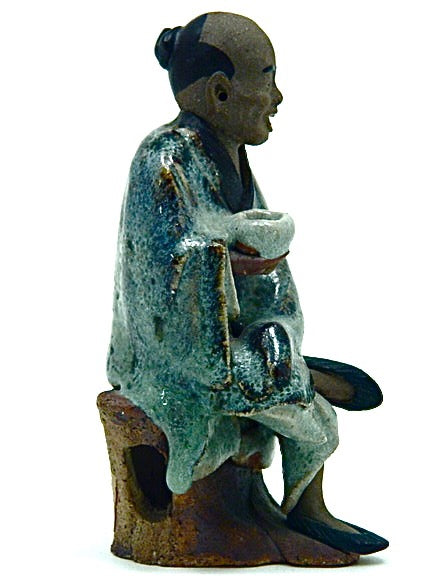

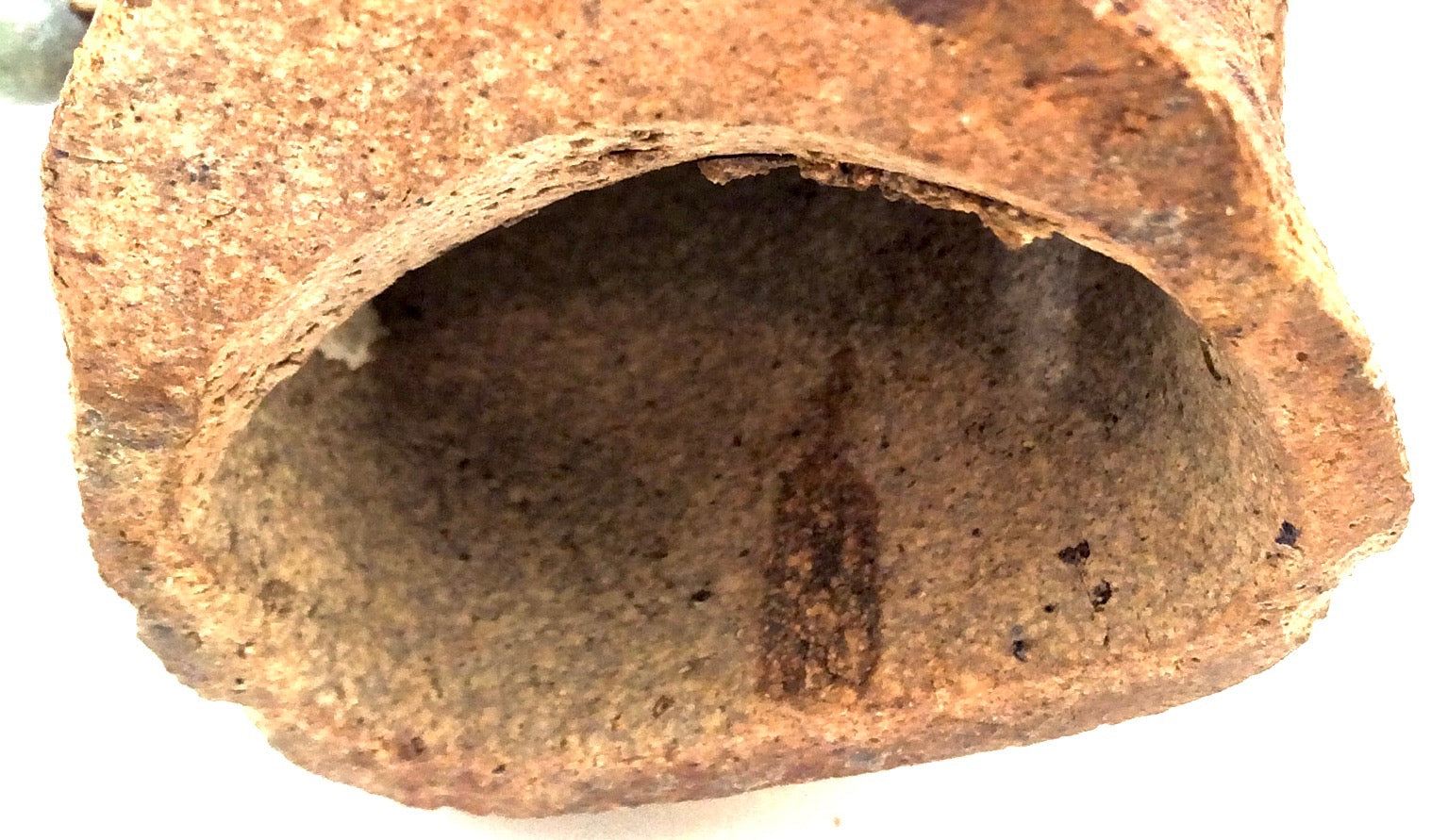
Antique Chinese Republic Shiwan (Shekwan) Pottery | Luohan with Teabowl
Dimensions: 2-1/2”w x 5-3/4”h
Shown is a very rare but simple image of Luohan, (Follower who was commanded by Buddha to await the coming of Maitreya, the Future Buddha), seated on a wonderfully detailed stump, as he enjoys a cup of tea. The first element we notice is the great detailing of his expressive face, with an exact representation of his teeth and hands, with crossed, exposed legs, and slippers on his feet. The coloration of his robe is a variegated and textured blue tone with a well-defined teacup. During the Qing dynasty, the shaved forehead and queue, (hairpiece up or down), were symbolic of Manchu authority and its cultural dominance. This strong symbolic meaning, particularly for men, represented virility, which additionally marked social or civil status. It is believed that this piece was executed earlier in the century and was not made for export, in that there seems to be an unreadable and unrecognized mark on the interior of the piece. This piece was purchased in a small town located in Guangdong province, China in 1985 from a scholar who specialized in the history and folklore embodied in Shiwan ware. Because of its age and rarity, few are found in museums outside of China, and most are held in private collections both in that country and abroad.
Antique Condition: This is an extremely beautifully glazed figure in excellent condition: no chips or missing elements or repairs. “As is” and retains the original craft/workmanship. No discoloration, chipping/cracking, surface wear, or structural damage noted.
NOTE: Overview and Characteristics of Shiwan Art Pottery
As an important part of Chinese traditional culture, ceramic wares have a long history reflecting the customs of this ancient culture. One of the most famous types of ceramic works is called Shiwan (Shekwan) ware, which has been the shining star in Chinese folk ceramic art as early as the Tang and Song Dynasties (618-906AD), and which flourished in the Ming and Qing dynasties.
Chinese Classical Shiwan ware is a type of traditional pottery that comes from the talented artists of a small town located in the south of China called Shiwan, in Foshan City, famous for its culture and pottery. Here craftsmen are well-known for their glazing techniques and unique forms. All the sculptural work is hand-formed, and sometimes involves numerous family members within a village, while directed by a master craftsman, every object is unique, and therefore, a limited edition, which attracts art collectors the world over. The three largest collections of Shiwan Art Pottery are housed in the Hong Kong Fung Ping Shan Museum, and the Chinese Cultural Centre in San Francisco.
Original Shiwan figurines, (1880-1940), are extremely rare because of the art/craftsmanship and their delicate, fragile nature. The greater the detailing, the more likely the figure has been made by a master artist, hence the higher value. Also the larger the piece the more valuable, (8-0” or pieces over 20.0” tall) are extremely rare. The age of Shiwan ware can be verified by the markings, or lack of markings, the fact that they are hand-formed, depicting highly expressive figural forms and vivid imagery; primitive in sculpting techniques; the decorative elements associated with the figure; the deep rich glazes infused with the piece; the type of regional clay (sandy, coarse clay is the oldest), and the stylistic differences. Finally, pieces signed or stamped by the artist/craftsman are rare. The oldest Shiwan pieces, prior to 1890, will not have a signature or stamp.
DO NOT CONFUSE MUDMEN / MUD FIGURES WITH SHIWAN WARE! This unique artistic style made Shiwan ceramics extraordinarily splendid, (not to be confused with the export mud men, which were smaller figures made of mud-like clay forced into a mold and/or finger-formed, and used as decorative additions to in bonsai, planters, and aquariums). These lack the expression, detail, and individuality of their glazed handmade counterparts). © 2019 — Vermillion Publishing
Return Policy
Our antique/vintage pieces are identified/described and professionally photographed, and considered, “as is”, therefore all sales are final. Read our full refund and return policy.

